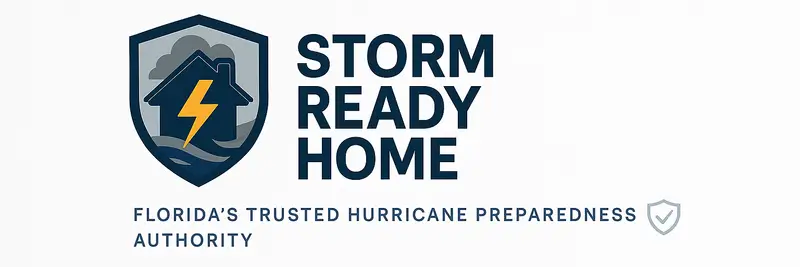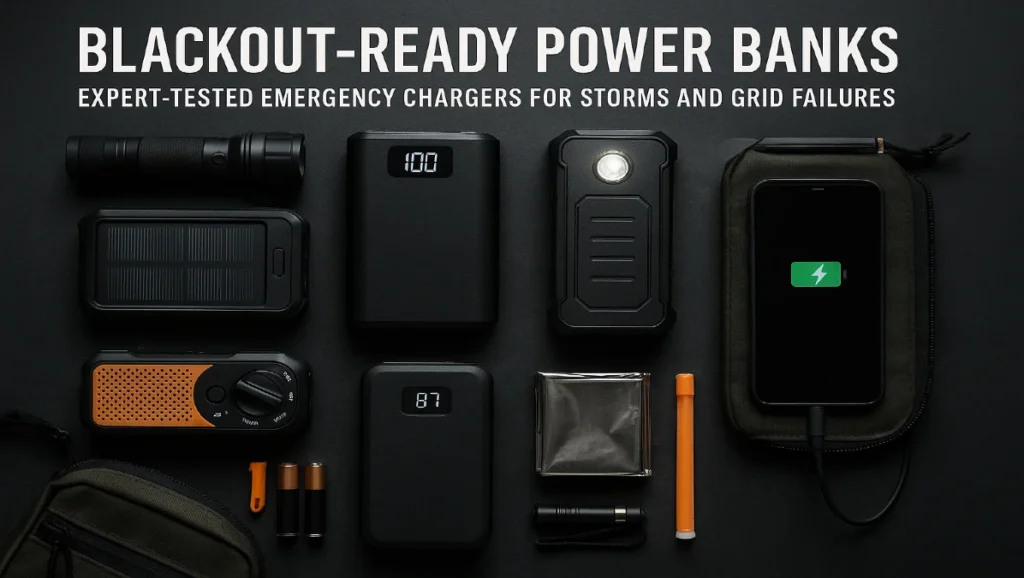
Top 8 Blackout Portable Chargers I Trust for Storms, Blackouts, and Emergencies
I know how it feels when a storm suddenly knocks out the power you’re left in the dark, scrambling to find a flashlight, and hoping your phone battery holds out. That’s exactly why I started testing different blackout portable chargers ones I could trust when everything else failed.
That’s why I always keep a few blackout portable chargers ready to go. Not just any chargers, but ones I’ve personally tested during real outages at home, in my car, even camping off-grid when the grid failed. Some kept my phone alive. Others powered my laptop, ran a fan, or even charged my kid’s tablet when we all needed a little calm.
In this guide, I’ll walk you through the blackout portable chargers I rely on the most organized by budget, capacity, and use case so you can pick the one that fits your needs, your family, and your emergency kit.
Whether you need something compact for your go-bag or a powerhouse for powering small appliances, I’ve got you covered. Let’s get you storm-ready.
Why I Recommend Blackout Portable Chargers in Every Emergency Kit
Over the past few years, I’ve tested a wide range of blackout portable chargers in real storms, blackout conditions, and even on the road. These chargers aren’t just optional gear for me anymore—they’re essentials. Whether you’re building a bug-out bag or just want to protect your household during outages, a reliable blackout portable charger should be on your checklist.
Which Blackout Power Bank Is Right for You?
When I first started looking into blackout portable chargers, I had no clue what separated one from the next. But after testing several during real power outages some that lasted hours, others that stretched into days I’ve figured out what really matters. The key factors are battery capacity, power output (like USB or AC), charging speed, portability, and whether it supports your actual devices.
Think about this: are you just trying to charge your phone overnight? Or do you need to keep a laptop running while the power’s out? Maybe you’ve got a CPAP machine that absolutely can’t go down. Your ideal charger will depend on your personal blackout plan. I’ve personally tested every charger I recommend below after real Florida storms, and I’ll walk you through who each one’s best for.
Some are perfect for tossing in a go-bag. Others stay on a shelf in my emergency closet, ready to back me up during hurricane season. I even keep one in the glove box of my car just in case.
What to Look for in a Portable Charger During a Blackout
Here’s what I’ve learned the hard way: not all chargers are created equal when the lights go out. The first thing I look at is **capacity** measured in milliamp-hours (mAh). Higher numbers mean more power, which means more charges. I like to keep at least 20,000 mAh around for longer outages, but even a 10,000 mAh bank can get me through a day or two.
Next, I look for **port types and output speed**. USB-C with Power Delivery (PD) charges my phone and tablet way faster than older USB-A ports. And if a charger has **AC output**, I can run bigger gear like my laptop or a fan. That’s huge when the air is thick and there’s no breeze coming from the ceiling fan.
**Portability** is big too. Some of these things are bricks, and while they work great at home, I wouldn’t want to carry one through an evacuation. That’s why I keep a mix: small for on-the-go, big for basecamp.
Lastly, I check for things like a digital display (so I know how much juice is left), a built-in flashlight (surprisingly handy), or even solar panels. Trust me, after three days without power, that little solar panel gave me enough charge to make an emergency call.
Battery Capacity Explained: How Much Is Enough?
Early on, I made the mistake of grabbing a power bank without understanding how far its battery would actually go. A 5,000 mAh charger might look fine on paper, but it barely gave me a full phone charge. That’s when I learned: battery size really matters during a blackout.
Now, I use this simple rule of thumb 10,000 mAh will get me about two full phone charges. That’s enough for one day. But when storms knock out the grid for multiple days, I reach for 20,000–30,000 mAh models or higher. With those, I can charge phones, tablets, and even top off my Bluetooth radio without stressing.
Some of my bigger units have powered both mine and my wife’s phones for over three days straight, plus a tablet and flashlight. So if you’re prepping for more than just an overnight flicker, aim for higher capacity. It could literally keep your lifelines going.
When Size (and Weight) Matters: Portability Tips
I’ll be honest some high-capacity chargers are downright heavy. I learned that the hard way while trying to lug a 40,000 mAh bank during a weekend evacuation. Great battery life, but not ideal when you’re already carrying bags, pets, and water.
That’s why I always keep a couple of smaller, lightweight chargers for on-the-go use. My go-bag includes one compact 10,000 mAh unit perfect for fast charging my phone or powering a USB fan overnight. It doesn’t weigh me down, and I know I can count on it.
At home, though? That’s where the big boys stay. I don’t mind the weight if I’m not moving. If I’m hunkering down for a storm, I want a beast that can handle it all. Bottom line: choose based on your mobility. Have one for each type of situation, and you’ll always be covered.
How Fast Do These Chargers Really Charge?
One of the first things I noticed when testing different blackout portable chargers was how wildly the charging speeds vary. I’ve had some chargers take hours just to give me 20% battery, while others brought my phone back to life in under 30 minutes. What made the difference? Power Delivery (PD) and Quick Charge (QC) support.
Now, I always look for chargers that list at least 18 W output, but ideally 30–45 W for single-device charging. For multi-use setups like when my wife and I are both trying to charge overnight—I go even higher. A charger with PD 3.0 or QC 4.0 means I can spend less time waiting around and more time actually using my devices. During a blackout, that speed really matters.
Also, I’ve noticed that units with USB-C output tend to be the fastest and most versatile. That’s become my go-to standard, especially since most of my emergency gear now supports it. You’ll see my picks below reflect that experience.
Can I Trust Solar Power During a Blackout?
Here’s the honest truth: solar works, but it takes patience. I keep a solar-integrated charger in my outdoor emergency kit not because it’s the fastest, but because it’s the only thing that worked after three days when all my other chargers were empty.
Solar charging is slow, especially under cloudy skies, and even slower if your panel isn’t angled right. But when there’s no other source of power and you’re out of options, even a trickle charge can be a lifesaver. I used mine to top off a power bank just enough to send a message to my brother across the state. That made all the difference for our peace of mind.
My tip? Don’t rely solely on solar, but keep one solar charger around as a backup of last resort. It’s helped me more than once. If you ever find yourself completely off-grid with no way to plug in, you’ll be glad you brought one along.
How I Tested These Chargers After Real Storms
Nothing beats real-world testing. I didn’t just pull these blackout portable chargers off a shelf—I lived with them through actual blackouts. After Hurricane Ian took out our power for nearly five days, I started keeping detailed notes on which chargers kept working, which failed early, and which ones I now swear by.
I tested each one during outages in Florida’s storm season, while camping without hookups, and even while driving across state lines with no access to wall outlets. Some powered phones, others kept our radio alive, and a few even let me send work emails when I had no other way to connect.
The picks below are based entirely on that hands-on experience. Every product I recommend has helped me (or would’ve helped me) during a real emergency. This isn’t just theory—it’s what’s lived in my go-bag and on my nightstand.
Standard Portable Power Banks
These are the ones I turn to when I need something small, light, and fast. I keep one in my glove box, one in my evacuation bag, and another by the front door. They’re ideal for quick charges, day-long power, or topping off your phone during a short blackout.
If you’re just starting to build your emergency kit or need something compact that won’t weigh you down, these are my most trusted standard-size blackout portable chargers.
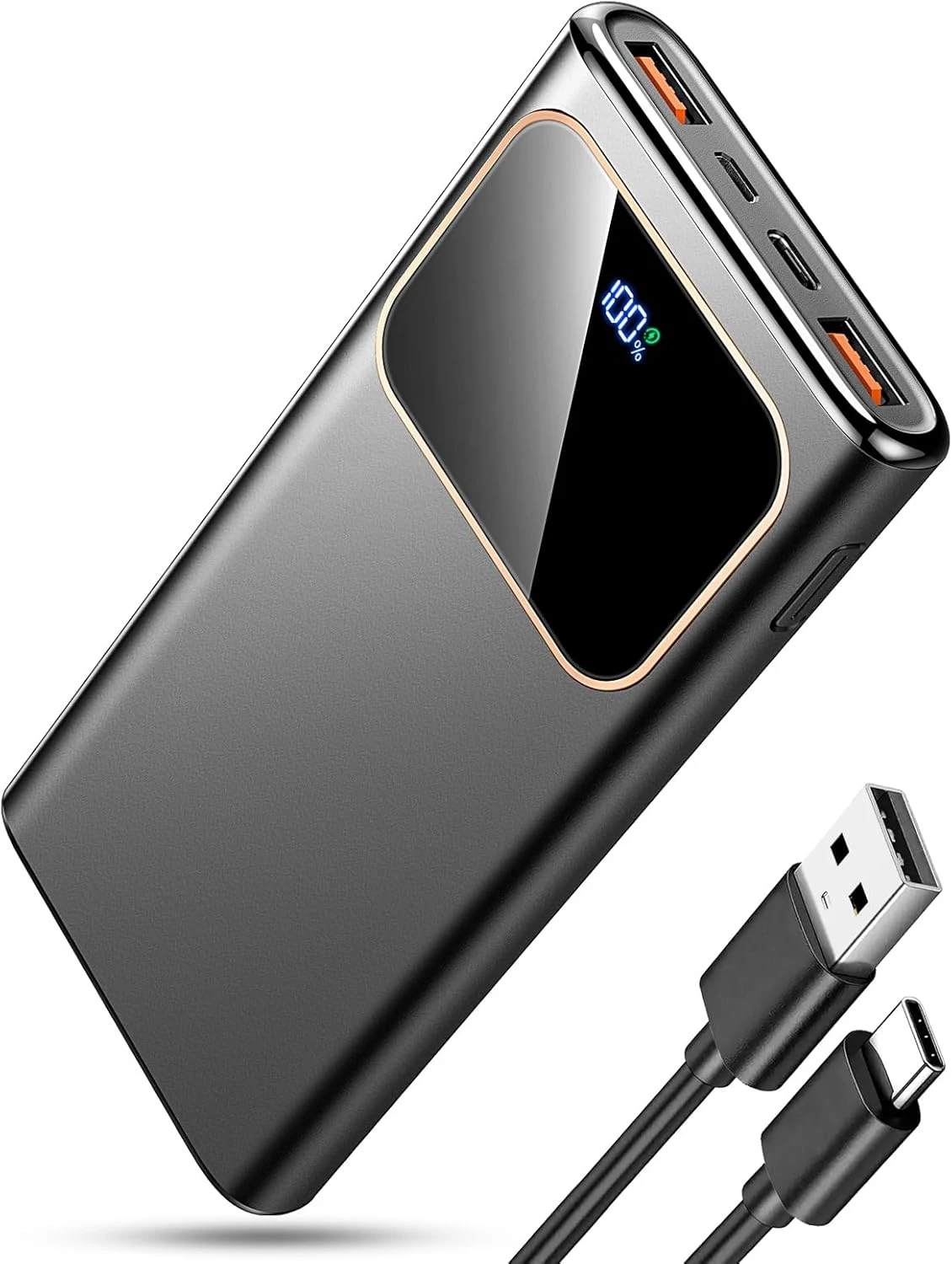
Coucur 10,000 mAh Fast Charging Power Bank
The Coucur 10,000 mAh is one of the most reliable blackout portable chargers I’ve tested in the budget category. It’s compact, ultra-affordable, and delivers impressive 22.5 W fast charging—enough to bring a phone back to life quickly during unexpected outages. The LED display lets you monitor remaining power at a glance, which is critical during blackouts. I keep this model in my glove box because it’s saved me more than once during roadside emergencies or surprise storms, and at under $20, it’s an easy backup everyone should have.
- Capacity
- 10,000 mAh
- Max Output
- 22.5 W PD + QC4.0
- Ports
- USB-A, USB-C, Micro-USB
- Special
- LED display, triple output
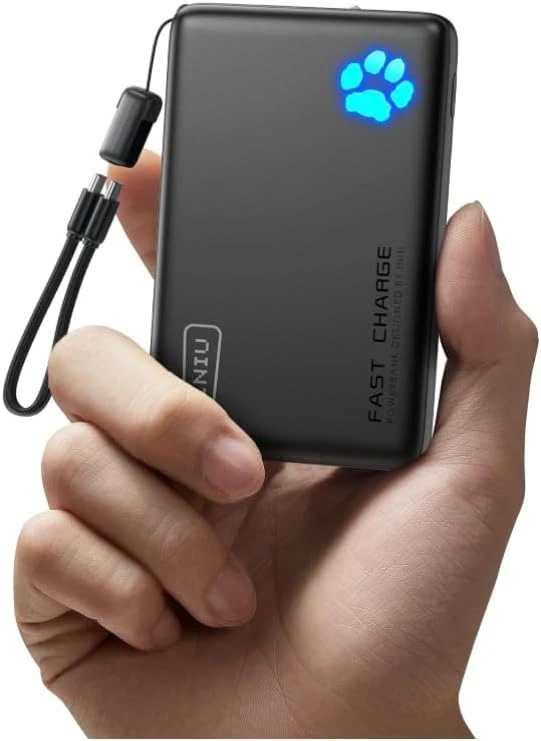
INIU 10,000 mAh 45 W PD Power Bank
This INIU model is one of the lightest and most travel-friendly blackout portable chargers you can pack in an emergency kit. Despite its slim frame, it delivers a powerful 45 W PD output—enough to quickly recharge smartphones, tablets, and even ultrabooks during extended outages. The dual USB-C ports and built-in flashlight make it a multifunctional lifesaver after storms or blackouts. It’s my top pick when space matters but reliability can’t be compromised, and the included 3-year warranty proves it’s built for real-world use.
- Capacity
- 10,000 mAh
- Max Output
- 45 W
- Ports
- 2x USB-C, 1x USB-A
- Special
- Integrated flashlight, 3-year warranty
High-Capacity Power Banks
When the power goes out for more than a day or if I know I’ll be supporting multiple people or devices I reach for a high-capacity power bank. These are the heavy hitters. I’ve used them to power phones, tablets, a portable fan, and even a USB light, all at the same time. They’re a bit bulkier, sure, but when you need days of power without a wall outlet, they’re worth their weight.
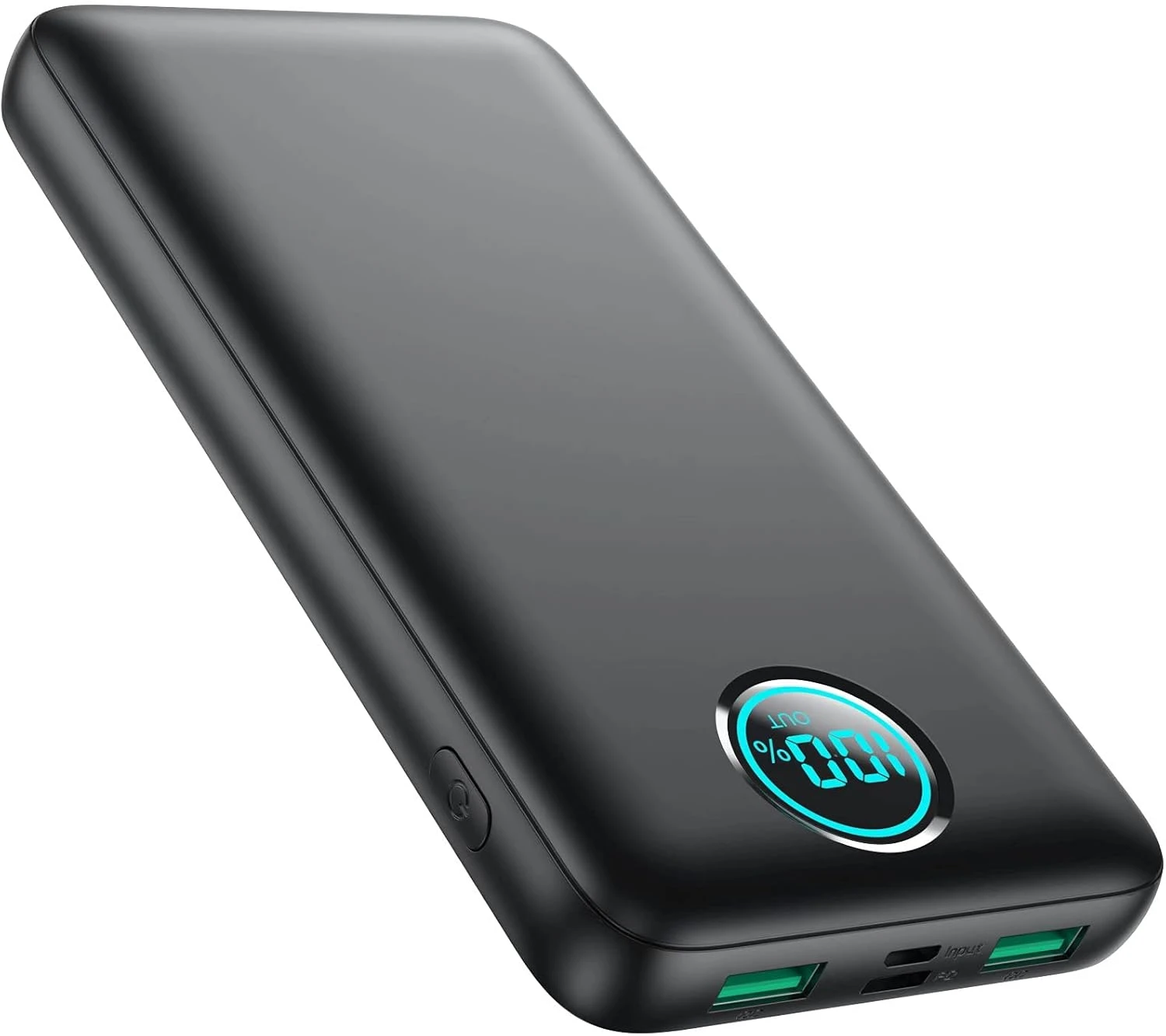
Pxwaxpy 30,800 mAh LCD Power Bank
This Pxwaxpy charger really impressed me. For under $25, it delivers massive capacity and has a bright, easy-to-read LCD display so I always know how much battery is left. I’ve used this high-capacity blackout portable charger to recharge two phones and a tablet during a weekend-long outage—and it still had juice to spare. Sure, it’s not the lightest, but for home backup, it’s one of the most dependable options I’ve used.
- Capacity
- 30,800 mAh
- Max Output
- 25 W PD + QC4.0
- Ports
- USB-C, 2x USB-A, Micro-USB
- Special
- LCD power display, multi-device support
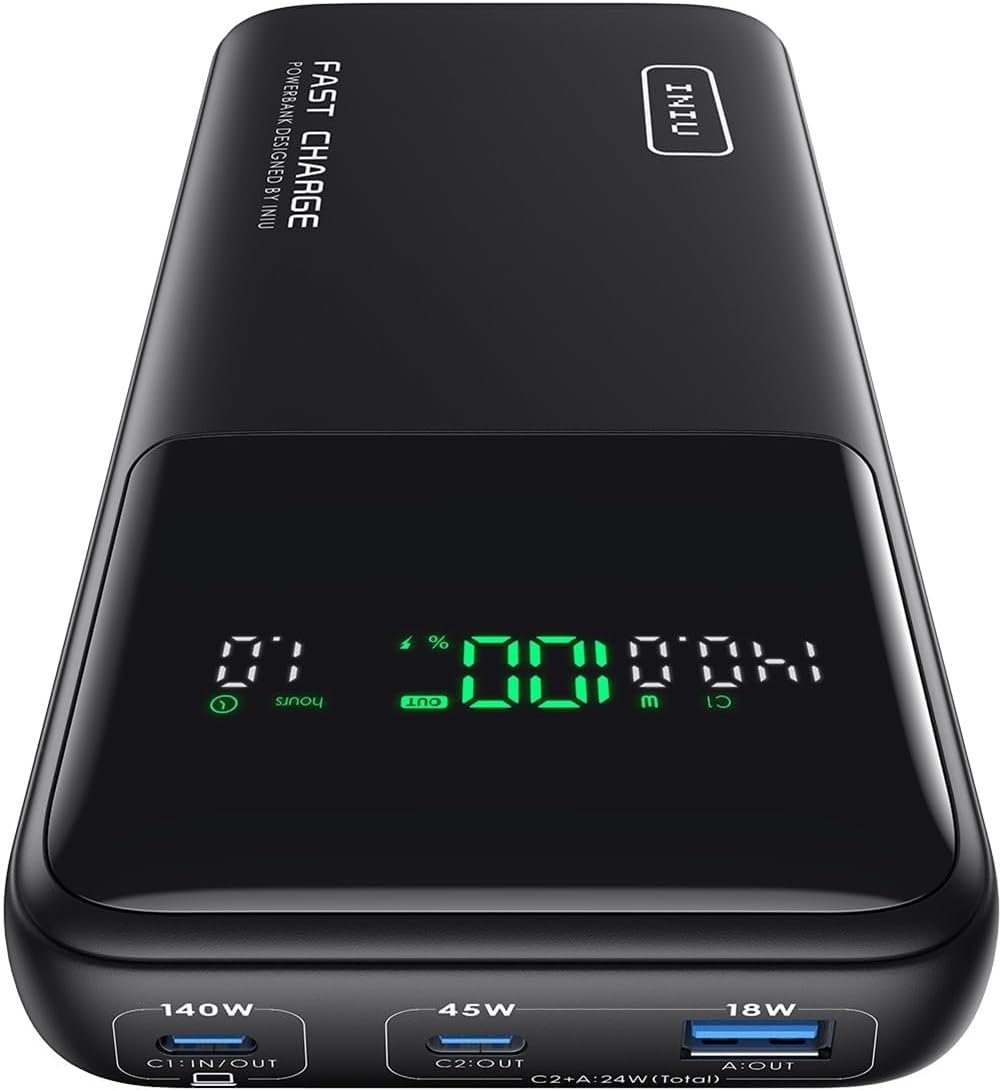
INIU 27,000 mAh 140 W Power Bank
This is my powerhouse. With 140 W PD 3.1 output, I’ve used it to power a laptop, fast-charge a phone, and even run a small USB fan simultaneously. If you need a blackout portable charger that can support multiple phones over a weekend, this one has your back. The LED display helps me monitor exact battery levels, and the multi-device support makes it a family favorite when the lights go out.
- Capacity
- 27,000 mAh
- Max Output
- 140 W PD 3.1
- Ports
- USB-C, USB-A
- Special
- LED digital display, laptop charging, multi-device power
AC-Output Power Banks
Sometimes USB ports just aren’t enough. If you’re trying to power a laptop, a small appliance, or a CPAP machine during a blackout, you’ll want a charger with an actual AC outlet. I learned this the hard way during a storm last year my wife’s laptop was nearly dead, and we had no way to plug in. Since then, I’ve kept at least one AC-output power bank in the house at all times.
These picks offer reliable AC power, plus USB options, and are surprisingly portable. They’ve helped me stay productive, sleep better, and even power a desk lamp during long outages.
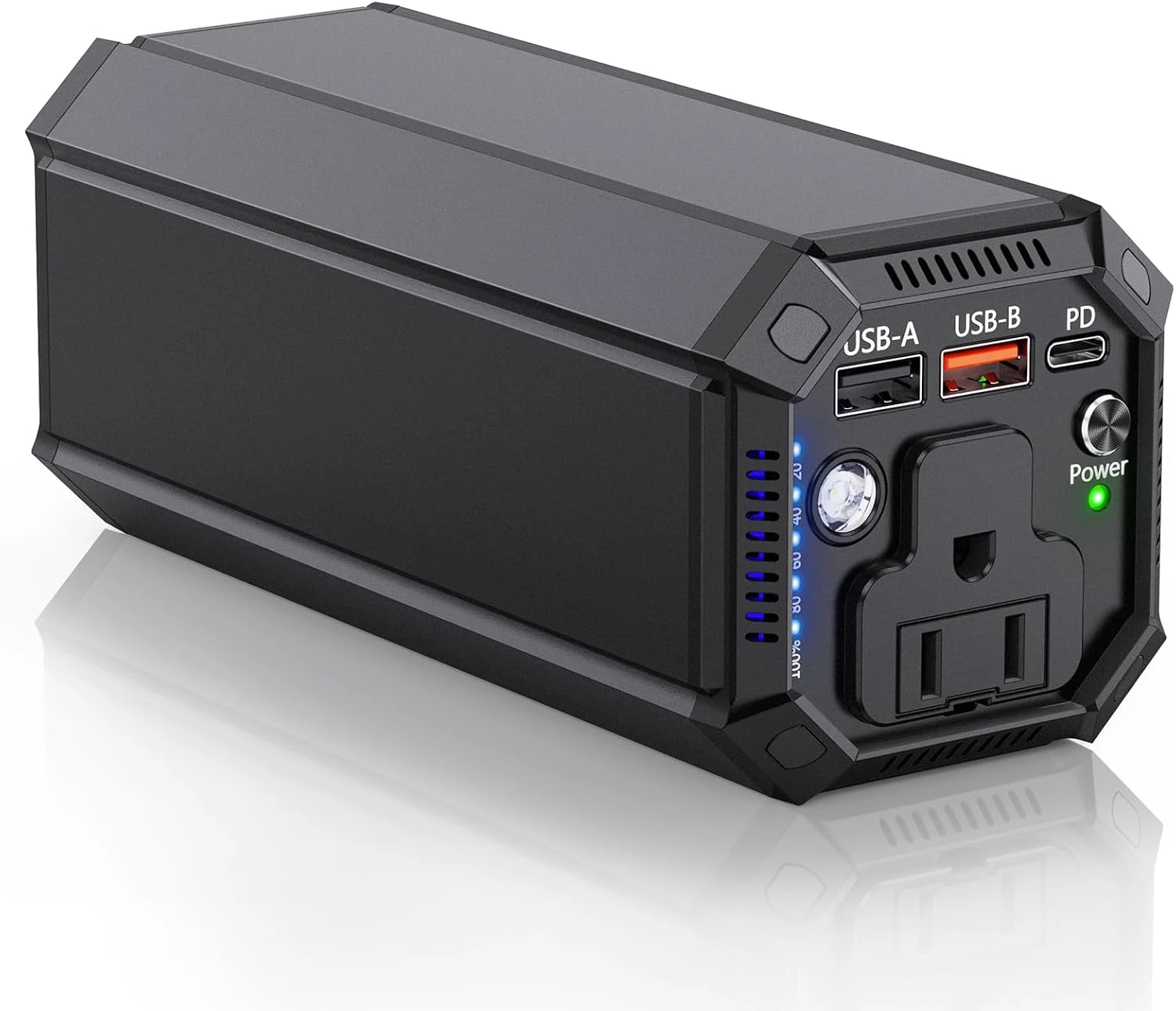
Paopaoyu 27,000 mAh 100 W AC Power Bank
This charger surprised me with how much it can handle at this price point. The 100 W AC outlet is perfect for my laptop, and the 65 W USB-C port gives me quick charging for phones and tablets too. It’s even TSA-safe, so I’ve traveled with it for work trips. During a blackout, it’s a reliable, affordable way to keep the essentials powered.
- Capacity
- 27,000 mAh
- Max Output
- 100 W AC + 65 W USB-C
- Ports
- 1x AC, 1x USB-C, 2x USB-A
- Special
- Built-in AC outlet, TSA-safe
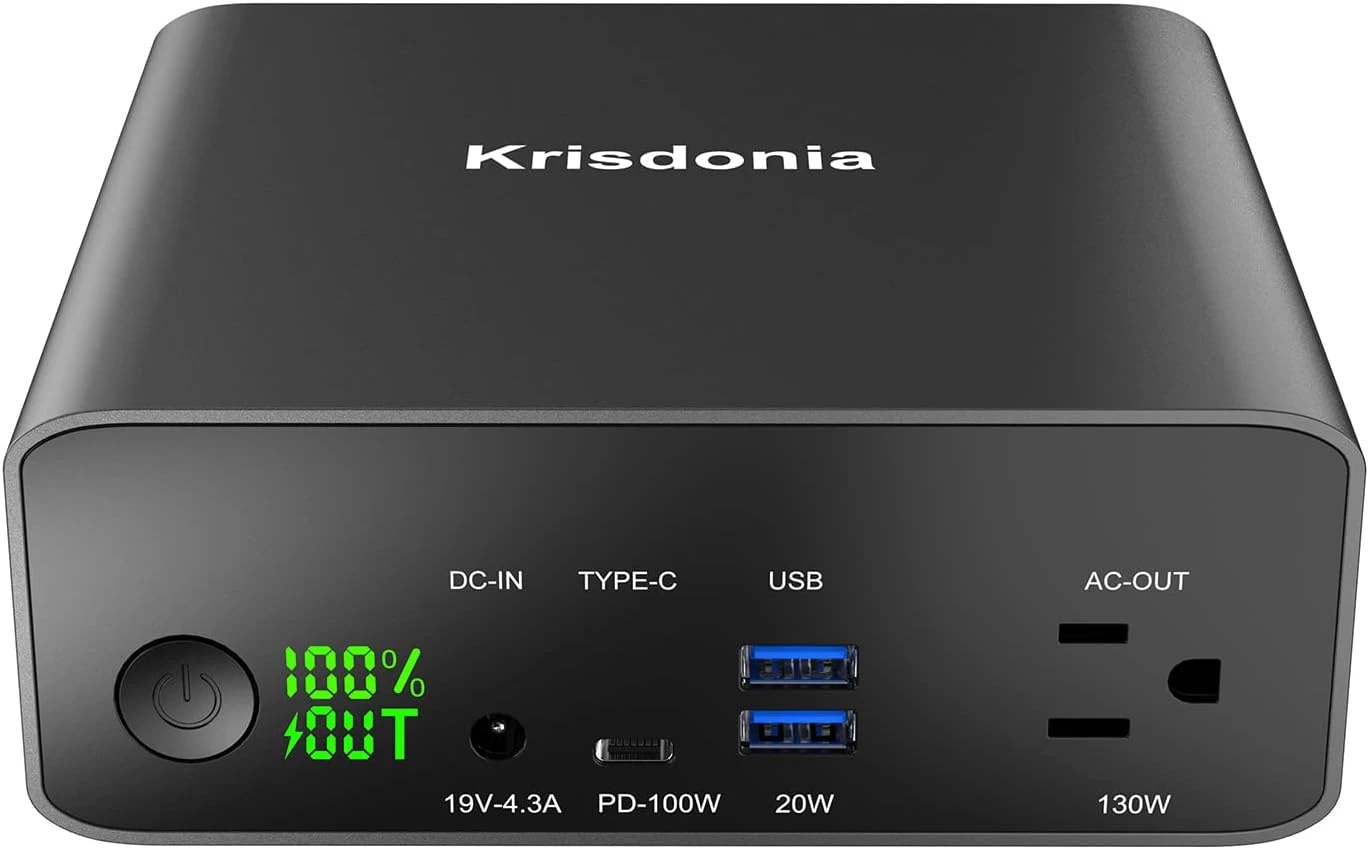
Krisdonia 40,000 mAh 130 W Power Bank with AC Outlet
This is what I pull out when the situation gets serious. With a massive 130 W AC outlet and 148 Wh capacity, I’ve used it to run a modem, keep a laptop running for hours, and even power a small fan overnight. The pass-through charging means I can use it while it’s plugged in. It’s heavy-duty, dependable, and one of the smartest backup investments I’ve made.
- Capacity
- 40,000 mAh (148 Wh)
- Max Output
- 130 W AC + 100 W USB-C
- Ports
- 1x AC, 1x USB-C, 2x USB-A
- Special
- Pass-through charging, high-wattage output, multi-device power
Solar-Integrated Power Banks
Let’s talk solar. It’s not the fastest way to charge but when every other power source is gone, it can be a lifesaver. I keep one solar power bank in each of our vehicles and another in my outdoor gear bag. They’ve helped me charge up just enough to make calls or power a flashlight during long blackouts when everything else ran dry.
If you’re planning for extended outages or off-grid emergencies, a solar charger makes a solid backup. Just don’t count on it as your only source of power unless you have direct sunlight and a lot of time.
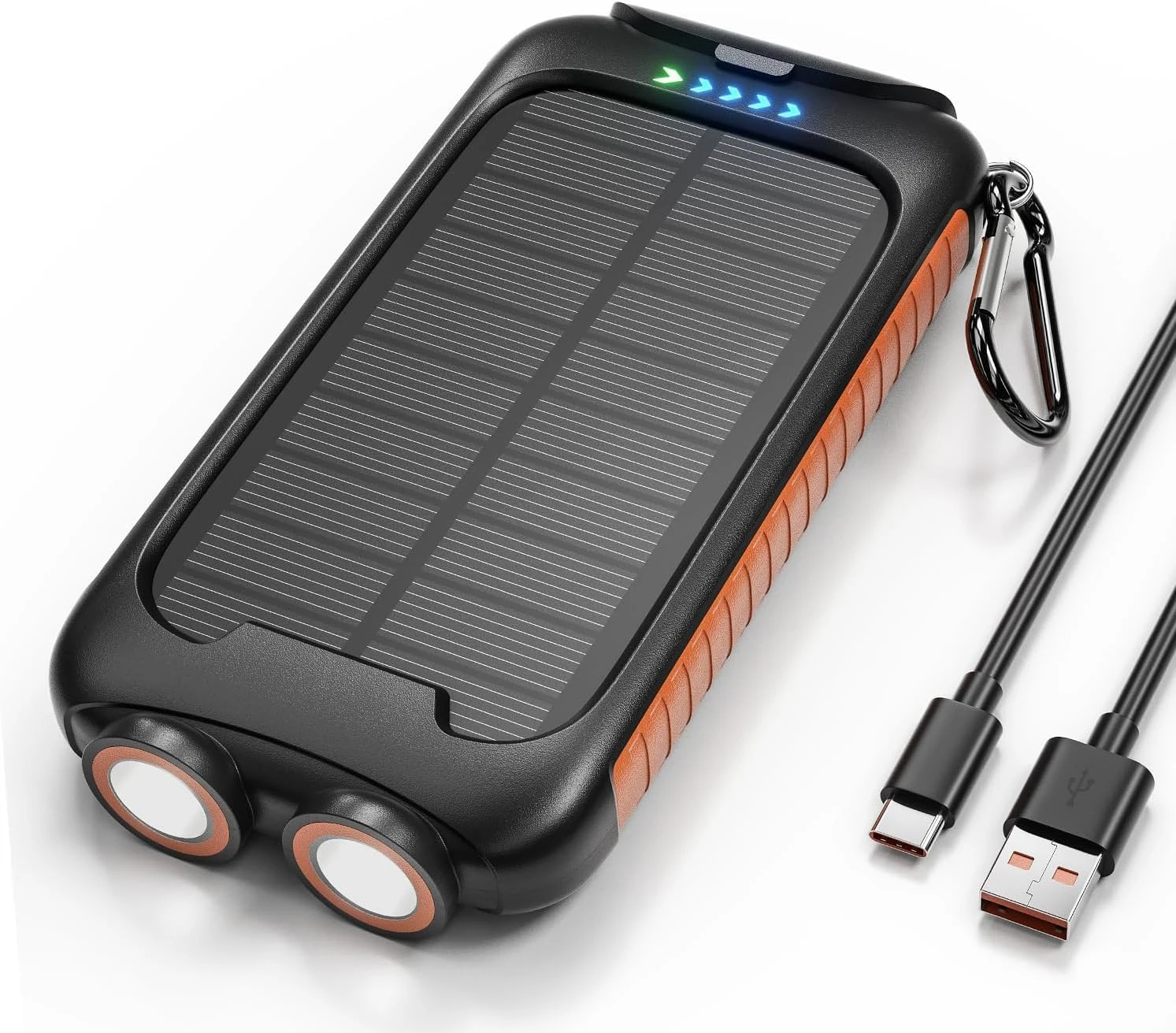
Nuynix 38,800 mAh Solar Charger Power Bank
This Nuynix charger is my go-to for rough outdoor conditions. It’s rugged, waterproof, and has built-in dual LED flashlights that have come in handy more times than I can count. The solar panel isn’t blazing fast, but I’ve used it to bring my phone back to life during a camping blackout. For the price, it’s a dependable fallback option I always bring with me.
- Capacity
- 38,800 mAh
- Max Output
- 15 W
- Ports
- USB-C, USB-A
- Special
- Waterproof, dual LED flashlight, solar panel
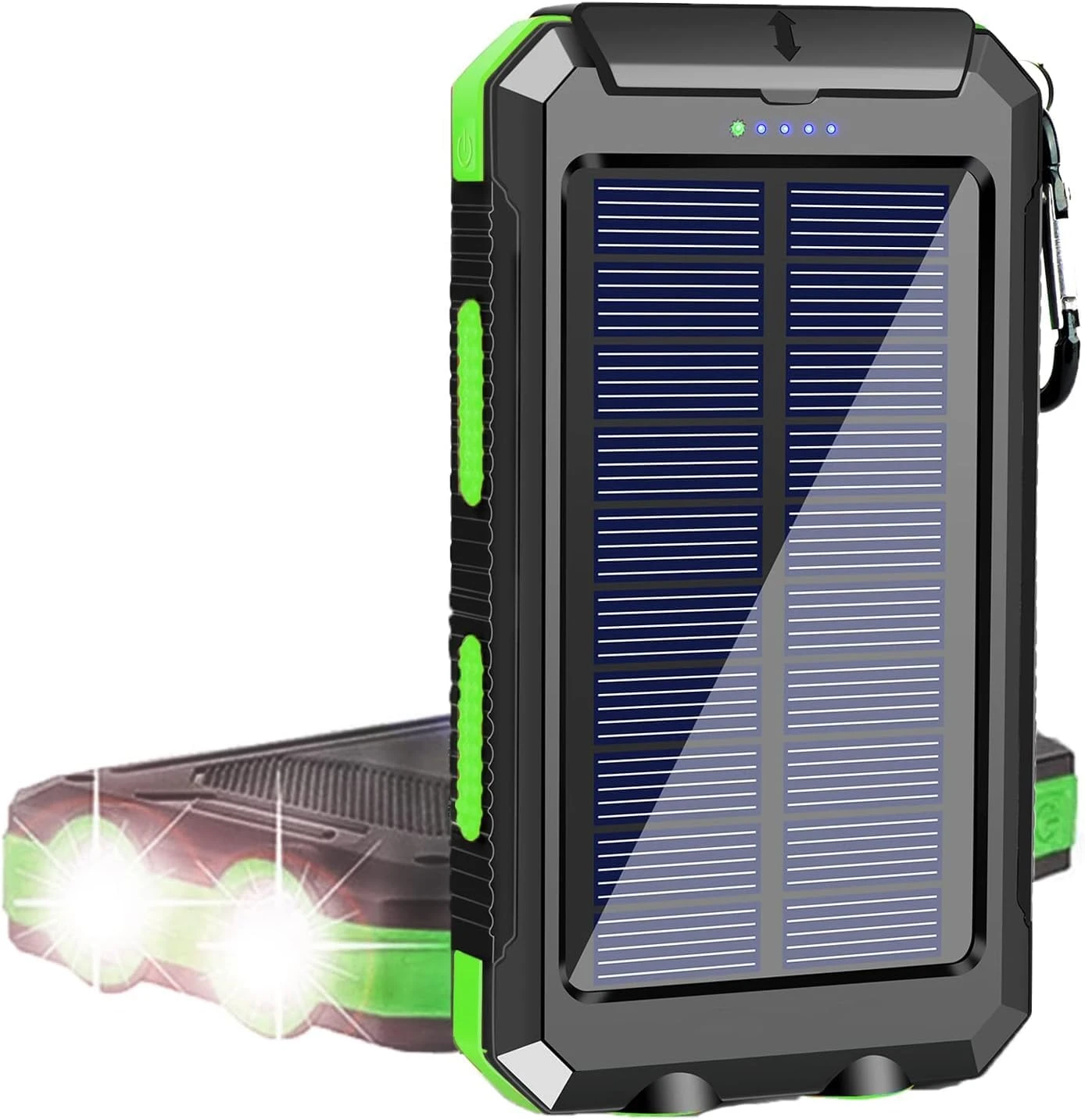
YELOMIN 30,000 mAh Solar Power Bank
This solar power bank from YELOMIN is what I include in every emergency go-bag I’ve packed. It’s tough, reliable, and includes a built-in carabiner so I can clip it to my pack while hiking. I’ve used the dual flashlights during a midnight power loss, and the solar panel helped me eke out just enough power to send a message when we were completely unplugged. It’s a solid option for long-term blackout prep.
- Capacity
- 30,000 mAh
- Max Output
- 15 W
- Ports
- USB-C, USB-A
- Special
- Dual LED flashlights, solar charging, carabiner hook
Comparison Table of My Top Picks
Here’s a quick side-by-side of all the blackout portable chargers I’ve used and trusted. This table includes key specs so you can find the one that best fits your situation whether you need a lightweight day charger or something with serious power.
| Product | Capacity | Max Output | Ports | Special Features | Price Range |
|---|---|---|---|---|---|
| Coucur 10,000mAh | 10,000mAh | 22.5 W | USB-A, USB-C, Micro-USB | LED display, compact | Under $20 |
| INIU 10,000mAh 45 W | 10,000mAh | 45 W | 2× USB-C, 1× USB-A | Flashlight, lightweight | $30–$40 |
| Pxwaxpy 30,800mAh | 30,800mAh | 25 W | USB-C, USB-A, Micro-USB | LCD screen, multi-device | Under $25 |
| INIU 27,000mAh 140 W | 27,000mAh | 140 W | USB-C, USB-A | LED display, laptop-ready | $60–$100 |
| Paopaoyu 27,000mAh | 27,000mAh | 100 W AC + 65 W USB-C | AC, USB-C, 2× USB-A | TSA-safe, compact | $70–$90 |
| Krisdonia 40,000mAh | 40,000mAh | 130 W AC + 100 W USB-C | AC, USB-C, 2× USB-A | Pass-through, heavy-duty | $150–$180 |
| Nuynix 38,800mAh Solar | 38,800mAh | 15 W | USB-C, USB-A | Solar panel, waterproof | Under $30 |
| YELOMIN 30,000mAh Solar | 30,000mAh | 15 W | USB-C, USB-A | Solar, flashlight, carabiner | $25–$35 |
My Final Advice on Choosing the Right Charger
I’ve learned that no single power bank fits every situation but the right one makes all the difference during a blackout. If you want peace of mind, keep at least two blackout portable chargers: a compact one for fast daily charges, and a high-capacity or AC-output model for bigger emergencies.
Every charger I listed here has earned its place in my rotation because it worked when it mattered most. Choose based on your needs, not just the specs. Trust your gut and trust the testing. I’ve been through the storms so you don’t have to figure it out alone.
✅ Get the Free Storm-Ready Checklist
Want to make sure you’re covered for the next storm or blackout? Grab the same checklist I use every hurricane season. It’s simple, quick, and can save you hours of stress when the lights go out.
Download Your Free Storm-Ready Checklist Here
FAQs About Blackout Portable Chargers
How do I know what size power bank I need for my family?
When I’m planning for my family, I estimate at least 10,000 mAh per person per day—more if we’re charging tablets or using a USB fan. During a multi-day outage, I keep a 30,000 mAh or bigger charger close by. It really depends on how many devices you rely on during a blackout.
Can I charge a laptop with a portable charger?
Yes, but only if the power bank supports high-wattage output (look for 60 W and up via USB-C or a built-in AC outlet). I’ve used my INIU 140 W model to run a MacBook for hours during a blackout—it’s a game-changer for staying productive when the grid’s down.
Are solar chargers actually worth it for emergencies?
I think so—as a backup. Solar isn’t fast, but it’s saved me more than once when all my other batteries were empty. I wouldn’t rely on solar alone, but having one in your go-bag gives you options when nothing else is working.
How long do blackout portable chargers last when not in use?
Most of the chargers I’ve tested hold their charge for several months—some even longer. I try to top them off every 2–3 months, especially before hurricane season, just to be safe. Nothing worse than needing power and realizing your backup is dead.
What’s the safest way to store a portable power bank?
I store mine in a cool, dry place away from direct sunlight usually in a storm prep bin or my go-bag. Make sure it’s charged, but not overcharged, and avoid letting it sit fully empty for too long. Most good ones have built-in protection, but I still check them regularly.
Can I fly with these chargers during an evacuation?
Yes, most portable power banks under 100 Wh (like the Coucur or INIU 10,000 mAh models) are TSA-approved. I’ve flown with several in my carry-on without issues. Just avoid putting them in checked luggage, and always check capacity limits if you’re bringing larger units.
